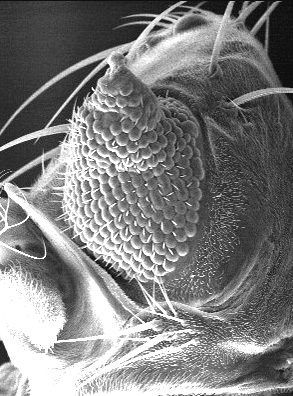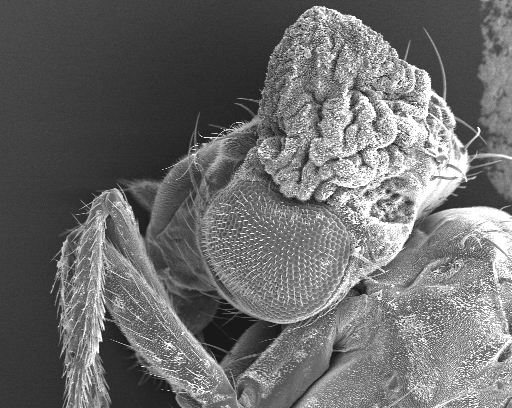"mats" - Mob As Tumor Suppressor Gene Discovered by Penn State Researchers
Mar 11, 2005, 16:35, Reviewed by: Dr.
|
|
Because of its far-reaching implications, this study is expected to establish a new area of research that is likely to engage scientists working in many different fields.
|
By Penn State ,
A new tumor-suppressor gene has been discovered by a team of researchers at Penn State, which also has discovered how the gene works with another tumor suppressor to control tissue growth. The team's genetic and biochemical studies will be published in the 11 March 2005 issue of the journal Cell. "This discovery extends our understanding of how tissue growth is controlled both during normal development and during the formation of tumors, and it raises the possibility that the function of this gene may have important implications for the understanding and treatment of human cancers," says research leader Zhi-Chun Lai, associate professor of biology, biochemistry, and molecular biology.
Lai has named the new gene "mats," an abbreviation for "Mob As Tumor Suppressor." As part of the research, Lai's lab added a human mats gene to tumor-plagued flies known to have a genetic defect in their mats gene, then found that tumors no longer developed within this line of flies in individuals that had incorporated the human gene into their DNA. "When we introduced the human mats gene into the mutant fly's body, we found it was able to perform the same function as a normal fly's mats gene," Lai says.
 |
| The eye of a fly into whose genes the researchers inserted both a mats gene and a wts gene, whose protein products join structurally at the molecular level to form a larger, more powerful protein complex. "We found that mats and wts have a more powerful effect when they combine, so together they can shrink the fly's eye dramatically,"the researchers report. PHOTO CREDITS: Laboratory of Zhi Chun Lai at Penn State |
The mats gene is thought to be present in all plants and animals, and Lai's lab identified defective mats genes in a human skin-cancer tumor and in a mouse breast-cancer tumor. "In these tumors, we found that the mouse counterpart and the human counterpart of the mats gene were mutated. On the basis of our research, we speculate that all mats genes in animals and plants may regulate cell number and tissue growth by restricting the proliferation of cells and promoting their timely death," Lai says.
This is the first time that any gene in the large superfamily to which the mats gene belongs has been shown to play a critical role in growth inhibition.
The scientists began their research when they found one line of the Drosophila fly, a model laboratory species, which developed tumors on their bodies. Lai suspected that these flies had a naturally occurring genetic defect that caused them to develop the tumors. He used genetic-mapping techniques to study the mutant fly's chromosomes and identified a short segment of DNA on which a mutant gene was most likely to occur. "Genetic techniques helped us to narrow our search for this fly's mutation to a few candidate genes within a very small part of one huge chromosome," Lai explains. The scientists narrowed the tumor-causing candidates down to two genes, then performed molecular-biology experiments with them both, revealing that the defective gene is the one they now call mats.
Lai's lab discovered that the mats gene had a mutation--an additional piece of DNA that had somehow become inserted into the molecular sequence of the gene. This mutation was a type of "transposable element" known to be able to jump to different locations along the DNA. The inserted material disrupted the gene's function, which is to make a particular protein that works in particular ways. "A mutant gene is not going to make the protein product that the normal gene is able to make," Lai explains.
Lai then generated mutant clones of this fly and found that they developed large tumors in many organs including the head, eye, wing, leg, and antenna. He also generated another mutant form of the mats gene--this time with a huge missing pie ce of genetic material caused by another transposable element jumping out and dragging lots of material along with it. "With such a deletion of material, this gene is basically gone, so we knew it couldn't possibly function at all," Lai says. Both kinds of mutations resulted in the formation of the same kinds of tumors. These studies indicate that the disabling of this one gene alone can cause the growth of tumors.
 |
| This fly has a defective Mats gene, which has resulted in poorly controlled tissue growth. Instead of the normal flat shape on the top of its head between the left eye (shown) and the right eye, this fly has a large lump of tumor tissue. PHOTO CREDITS: Laboratory of Zhi Chun Lai at Penn State |
The researchers then did a number of experiments to study this line of flies with the clearly defective mats gene. "With transgenic techniques, we were able to introduce a normal mats gene into the chromosomes of flies whose mats gene was mutated," Lai explains. "We found that the line of flies with this additional normal mats gene no longer developed tumors.
The researchers also inserted a human mats gene into the line of mats-mutant flies and found that the human gene is able to perform the same function as the fly gene. Additional experiments also revealed that the mats gene is required for normal differentiation of eye cells during the development of the fly's eye.
Lai's team also tackled the tough challenge of discovering how the mats gene is able to suppress the growth of tumors. "We did not find many clues when we compared the sequence of the mats gene with the sequence of other genes in the public databases," Lai says. "But we did find a counterpart to the mats gene in yeast. This yeast counterpart is known to make a protein that forms a complex with a kinase--an enzyme that catalyzes genetic activity--so we wondered if the protein product of our mats gene also could function in this way." Lai was particularly intrigued by the possibility that the protein product of the mats gene could partner with the kinase product of a known tumor-suppressor gene named "wts," which turned out to be the case.
The researchers performed three experiments to test whether the mats and wts genes interact genetically. In the first experiment, they inserted an additional normal mats gene into a line of flies and found no change in the shape of the flys' eyes. In the second experiment, they inserted an additional normal wts gene and found that the fly's eyes were decreased in size and deformed. In the third experiment, they inserted both a mats gene and a wts gene. "We found that mats and wts together can shrink the fly's eye much more dramatically," Lai reports. "Their effect is not additive, but synergistic. The two genes have a more powerful effect when they combine to work together in reducing cell proliferation and promoting cell death, so the tissues get much smaller." Lai's lab also performed other experiments that demonstrated that the two protein products of the two genes join structurally at the molecular level to form a larger, more powerful, and more productive protein complex. 
- This study will be published in the 11 March 2005 issue of the journal Cell
http://www.psu.edu/
Other members of Lai's research team at Penn State include Xiaomu Wei, Takeshi Shimizu, Edward Ramos, Margaret Rohrbaugh, and Li-Lun Ho, all graduate students; Ying Li, a technician; and Nikolas Nikolaidis, a postdoctoral fellow in the laboratory of Masatoshi Nei, Evan Pugh Professor of Biology.
This work was supported by Penn State, the National Science Foundation, and the National Institutes of Health.
|
For any corrections of factual information, to contact the editors or to send
any medical news or health news press releases, use
feedback form
Top of Page
|